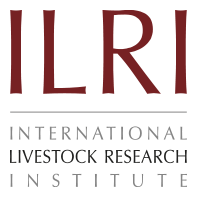Tibetan
Ecological conditions: The Tibetan pig is mainly distributed over the drainage basin around the middle of the Bramaputra River and the high-mountain and deep valley areas between three rivers (NuRiver, LanlunRiver and JinshaRiver) of East Tibet. The main habitat of the Tibet pig is within the forest and valley zone which is located at an altitude of 2900-4100 metres. The central production area lies in the several counties (Milin, Linzhi, Gongbujiangda, Motuo, Bomi, Mangkang) (See the Figure alongside, the red color area). The area is cold with undistinguishable seasons. The average ambient temperature is between 6.4 and -8.5A1E6, with vast differences in temperatures between the day and the night. Vegetation within this region is sparse. The herding region of Tibetan Pig is expansive covering mountainous grassland, Jiuconggedian rangeland, high mountains and low bulrush meadows. There are about 157,600 pigs in this region, which include 30,000 Tibetan pigs. Currently, the distribution areas of the original Tibet pigs are decreasing gradually and the breed is facing the danger of extinction (Li et al, 1993). According to classification of Pig Breeds in China, Tibetan Pig was classified as only one of Plateau type (Zhang et al, 1986).
Appearance characteristics: The Tibet pig has black or brown hair with patches of white on the forehead, bottom of limbs, tip of tail and under the axilla. The animal also has a small body size, narrow head with a straight forehead, taper-like mouth and small vertical ears. The back and waist are horizontal and a little protrusive, with the front body lying lower than the rear. The body length is short, crotch and slightly tilted. The limbs are strong, the bristle is long and rigid and animals have plenty of fluff under the hair. Under the adverse conditions the Tibetan Pig are able to tolerate and survive due to several adaptations. They have very good vision, sensitive smell, well-developed heart, and high deposition of fat.
Production performance: Under grazing conditions the Tibetan sow usually furrow once a year. The average litter size of first, second and third parity is 4.76, 6.03 and 6.43, respectively. Individual piglets weigh 0.4-0.6kg at birth and are naturally weaned at 2-3 months of age, when they weigh 2-5kg (Zhang et al, 1986). The pigs have slow growth and attain a body weight of 20-25 kg at 12 months and 35-40kg at 24 months of age. The slaughter rate is low, however, the skin is thin and lean meat percentage is relative high compared with other Chinese indigenous pig breeds.
Breed Utilization:
1. Crossbreeding Tibet sow used as a dam line in crossbreeding with exotic boars produced offspring with enhanced production performance. In a research carried out to test crossbreeding performance of Tibet pigs, the daily gains and feed conversion rates of three different crossbred offspring (Berkshire A2AA Tibet, Soviet White A2AA Tibet and Yorkshire A2AA Tibet) were 356g, 337g, 336g and 4.21kg, 5.0kg, 5.32kg, respectively, which were much higher than that of pure Tibet pig, 124g and 7.01kg.
2. Conservation The Tibetan Pig is mainly distributed in a leading natural conservation zone of Tibet. Because the area for herding is extensive and the number of herded Tibet pigs is large, the rate of inbreeding is low. Attempts at conservation of the Tibet pig should combine protection with improvement i.e. ecological conservation. With the opening of the Tibet boarders, Tibet now becomes a touring area with the Tibet pig being central to the industry. Various activities may include tasting meat of pure Tibet pigs and hunting of Tibet pigs.
Reference
1. Fan B., S.L. Yang and B. LiuA3ACCharacterization of the genetic diversity on natural populations of Chinese miniature pig breeds, 2003, Animal Genetics 34:6 465-466A1A3
2. Li J.Y. and Luo Z., Research on The Habits and Characteristics of Tibet Pigs on Tibet Plateau. Ecology of Domestic Animal, 1993,14(1):18-21.
3. Li X.Y., Z. J Ren and H. Chang. Genetic diversity of Diqing-Tibetan Pig of Yunan. Chinese Biodiversity, 2000, 8(3):253-256.
4. Tian Z.H., C. H. Zhang, J.C. Zhong and J.G. Yuan, Research on blood protein polymorphism of Tibetan Pig. Journal of Southwest Nationatitics College, 1999, 25(3): 278-283.
5. Yang J., J. Wang and J. Kijas, Genetic diversity present within the near-complete mtDNA genome of 17 breeds of indigenous Chinese pigs, 2003, 94(5) 381-385.
6. Yang S.L, Z.G. Wang and B. Liu, Genetic variation and relationship of eighteen Chinese indigenous pig breeds, Genet. Sel. Evol. 2003, 35: 657-671.
7. Zhang Z.G., B.T. Li, X. H. Chen, Pig Breeds in China. Shanghai Scientific and Technical Publishers. 1986 pp175-178.





